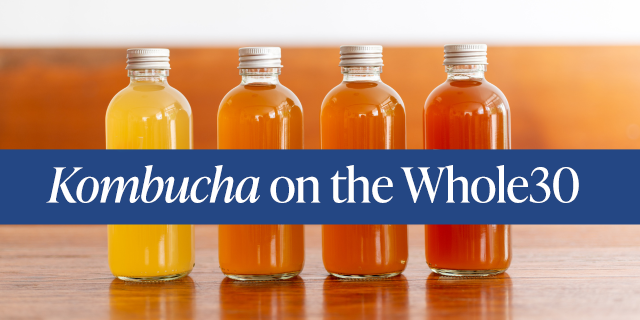During the course of your Whole30, we fully expect you’ll find yourself in a situation that requires what we call “emergency food.” When might you need to pack your own meal or hunt for good food on the fly?
- Travel by plane, train, or automobile
- Forgotten lunches or post-workout meals
- Busy days or late nights at the office
- Sporting events (as a spectator or a participant)
- Outdoor activities (hiking, biking, beach days, or fishing)
- Impromptu parties or spontaneous social gatherings
In summary, life happens! We don’t want you to avoid real life for 30 days, but that doesn’t mean you should go into the situation completely unprepared. If you know your day might get crazy, or you’ll be out and about for hours at a time, you’d better plan ahead. If you’ve got a restaurant or cafeteria nearby, you’re golden. Just follow the tips in our Dining Guide and you’ll have a Whole30 meal on your plate in no time. But what if there isn’t as much as an Olive Garden in sight? Today, we’ll give you specific suggestions for finding Whole30 food on the fly, and present you with the newest thing in Whole30 convenience: the Whole30 Approved Emergency Food Kit from Barefoot Provisions. (See below for details, and a fun contest!) In the meantime, let’s talk about what to do if you find yourself caught by surprise, but still have access to a grocery store.
Mealtime Math
To build Whole30 meals on the go, you’re going to need to use your math skills. (Nothing complicated, we promise.) To get the most benefit (and enjoyment) out of these not-exactly-home-cooked meals, simply combine a compatible source of protein, some healthy fat, and carbs (veggies and/or fruit). Here’s the equation for some of our favorite Whole30 emergency meals:
- Can or pouch of tuna/salmon + guacamole + celery, carrot, and jicama sticks
- Jerky (like Chomps) + coconut flakes + a pint of bluberries
- Rotisserie chicken + carrots + apple + almond butter
- Compatible deli meat + pistachios + kale chips
- Primal Pacs jerky, fruit, and nut mix
- Prepared salmon or chicken + 1/2 avocado + banana
Now, some of these meals look kind of random; that’s because they are. If you have access to a Whole Foods with a robust selection of healthy prepared foods, you’re golden. If you’re at a normal grocery or convenience store, you might be eating sardines, almonds, and a banana. If the point is to make it through to your next meal while staying compatible to the Whole30, sometimes you do what you have to do. If you’re not able to find compatible protein, that’s okay. As long as you have two out of the three macronutrients (in this case, fat and carbs), you should be satiated enough to get you through to your next full meal.
Finding Food: Grocery Store
When you find yourself in a tricky food situation, a grocery store is your very best source of food. Most of the items there come with clearly visible ingredient labels, and there’s a wide variety of options available. If your grocery store has a natural or organic section, that’s a good place to start. Look for notes on the shelf indicating gluten-free or allergen friendly items, and always read your labels. Every. Single. Label. Not everything we list here will automatically be Whole30 compatible. Canned tuna may contain soy, deli turkey may have sugar or carrageenan, prepared proteins may contain dextrose or soy, and not every flavor of Epic bars are Whole30 approved (yet). Also, don’t forget your accessories! Make your on-the-go life a little easier with a can opener, some plastic silverware, salt and pepper packets, and paper plates.
Protein:
- Canned meat (tuna, salmon, chicken, sardines)
- Deli counter (roast beef, turkey, salami, prosciutto)
- Prepared foods (“simple” chicken or salmon, rotisserie chicken)
- Snack bars (Epic bars)
Healthy Fats: These are pretty easy to find in just about every grocery store! Read your labels, looking for hidden sugar or peanut oil in nuts and seeds, or added sugar or sulfites in coconut flakes.
- Avocado or guacamole
- Canned olives (or olive bar)
- Nuts and seeds
- Coconut flakes
- Coconut butter
- Coconut milk
- Ghee
Vegetables and Fruit: The fresh produce section is guaranteed to have veggies and fruit you can eat with little or no preparation. (Beware of added sugar or sulfites in dried fruit, however.) You can also head into the canned vegetable aisle for compatible finds; we love canned sweet potato mixed with coconut milk (BYO bowl).
- Baby carrots, cherry tomatoes, celery, etc.
- Pre-cut peppers, cucumbers, broccoli, etc.
- Canned vegetables (sweet potato, butternut squash, pumpkin)
- All fresh fruit
- Canned fruit (in water or fruit juice, not syrup)
- Dried fruit (use very sparingly!)
Finding Food: Build Your Own Stash
If your emergency food situation keeps you from accessing a grocery store or health food market, or if you find yourself in these kinds of emergency food situations often, it can be helpful to keep some stock on hand in your carry-on, desk drawer, purse, gym bag, and glove box. You’ll still want to follow our equation of protein, fat and veggies. Don’t get too distracted by compatible carb-only snack foods (like dried or freeze-dried fruit, fruit leathers, or seaweed and kale chips)—those might be more fun to eat than a can of tuna with guacamole, but they won’t keep you full or give you the energy you need to make it through to your next meal.
- Look for protein options that will last for at least a month unrefrigerated. Opt for canned proteins like tuna, sardines, salmon, and chicken, and dried options like compatible jerkies and snack sticks.
- Keep small bottles or jars of your favorite fats on hand. Almond and coconut butter are great for eating with vegetables (or on their own, if necessary). Olive and avocado oil stored in opaque containers are good for dressing salads or veggies.
- Nuts and seeds, coconut flakes, olives, and small containers of canned coconut milk are also portable fat options that don’t require refrigeration.
- Add in fresh fruits and vegetables to round out your meals whenever you can, but consider keeping a small amount of dried veggies like kale chips or SeaSnax for times when you just can’t get to the fresh stuff.
- Try some all-in-one snacks like Primal Pacs, Wild Zora bars, or Epic Bars for a quick, balanced snack on the go.
- Don’t forget utensils! Keep a bowl and plate, silverware, and can opener handy in your office desk or gym locker so you can eat when you need to.
Stock Your Stash with Barefoot Provisions
To make your Emergency Food Kit even easier to build, we’ve teamed up with the folks at Barefoot Provisions to bring you a Whole30-compatible Emergency Food Kit. This $45 kit (plus shipping) contains:
- 3 complete mini-meals
- 3 protein-only options
- 3 healthy fat options
- 3 veggie options
We asked the Barefoot team to give you a number of compatible protein options, because that’s usually the hardest to find on the go. Add your own fresh veggies and fruits and you can get 6 balanced mini-meals out of this one Emergency Kit; or break up the components and stretch your stash out even further. The folks at Barefoot also stock a number of compatible products and ingredients in their Whole30 store, so while you’re there to grab your Emergency Food Kit, browse around and pick up a wide variety of nut butters, compatible spices and seasonings, exotic dried fruits to fuel those long runs or bike rides, or some Pure Indian Foods ghee.
Win a Barefoot Provisions Whole30 Emergency Food Kit!
We’re launching a contest on the Whole30 Instagram page, and one lucky Whole30’er will win a Whole30 Emergency Kit from Barefoot Provisions. Follow us over at @whole30, and enter by 11:59 PM PDT on Monday, February 16th for your chance to win. (U.S. residents only.)

















